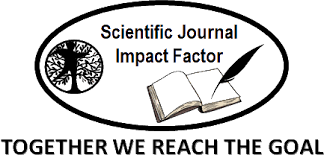Linguopragmatic features of irony: A comparative study based on English and Uzbek languages
Keywords:
Irony, linguopragmatics, cross-cultural communicationAbstract
This research explores the linguopragmatic features of irony through a comparative analysis of the English and Uzbek languages. Irony, as a subtle and multilayered communicative device, functions not only on a lexical level but also through pragmatic cues such as tone, context, and cultural expectations. The study examines how irony is formed, interpreted, and conveyed in both languages, focusing on pragmatic strategies like implicature, presupposition, and context-dependent meaning. It also highlights the cultural norms that influence the use of irony, showing how English often employs more explicit sarcasm, while Uzbek prefers indirect and ethically framed kinoya. Through the analysis of authentic examples from literary texts and conversational discourse, the research identifies key similarities and differences in the pragmatic realization of irony and discusses the implications for translation, language teaching, and intercultural communicationReferences
1. Baker, M. In Other Words: A Coursebook on Translation. London: Routledge.
1992.pp. 223–238.
2. Matkarimov, B. O‘zbek adabiyotida kinoyaning badiiy talqini. Toshkent: Fan
nashriyoti. 2007.pp. 45–52; 97–104.
3. Hutcheon, L. Irony’s Edge: The Theory and Politics of Irony. London:
Routledge.1994. pp.9–18; 84–90.
4. Abdulloh Ahmadjonov. Comparative analysis of English and Uzbek irony.
Unpublished manuscript.2024.
5. Achilov, OybekRustamovich, &Todjidinova, UmidaUrinboyQizi (2023).
Tarjimonlikvatarjimamadaniyatimuammolari. Oriental renaissance: Innovative,
educational, natural and social sciences, 3 (4), 131-135.
6. Achilov, O. (2023).
Hozirgizamontilshunosligidailgarisurishhodisasinitadqiqetishningnazariyasoslari.
Журналиностранныхязыков и лингвистики, 5(5).
7. Achilov, O. (2023). Foregrounding and interpretation. Журнал иностранных
языков и лингвистики, 5(5).
Downloads
Published
Issue
Section
License

This work is licensed under a Creative Commons Attribution-NonCommercial 4.0 International License.














